Afelandra: species, reproduction and care
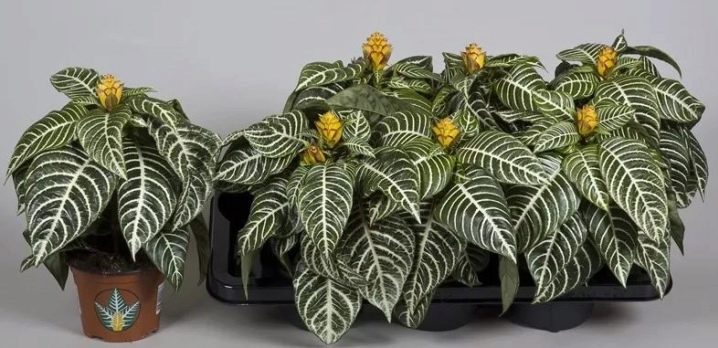
Afelandra is a unique culture, with variegated in white stripes, dark green glossy leaves and incredibly colorful inflorescences. The decorativeness of the plant is preserved all year round, allowing you to recreate a tropical paradise in the house. You need to take care of the flower carefully, the plant is quite capricious, but it will thank you for all the work with interest. How to find a common language with the culture, types and varieties of plants, the causes of diseases and other nuances, we will consider in more detail in the article.

Description
Aphelandra is a native of the Acanthus family. The homeland of the plant is America, its northern and southern parts. Afelandra is a perennial flower of a semi-shrub or shrub type, which in its natural habitat reaches a height of several meters. Indoor culture is limited at most 1.5 meters, used as a decorative leafy, decorative flowering specimen.


The leaf plates of the plant are large, with a shiny surface. Its outer side is dotted with a pattern of light stripes emanating from the central and lateral veins. Afelandra leaves also have a corrugated shape. The buds of the culture have no decorative value, the bract attracts attention. In shape, it looks like an ear, up to 15 cm long. Color in a warm range: yellow, orange, red.


When pruning and other manipulations with a flower, you should be careful, the plant sap is poisonous. All procedures should be carried out using protective clothing, wash open areas with soap. The initial creation of favorable conditions for the cultivation of Afelandra will ensure stable growth, improve the duration of the flowering of the culture, and the subsequent care of the plant.
Varieties
There are more than 175 varietal varieties of the crop. Only two types are suitable for keeping in an apartment - protruding aphelandra and orange. The latter is extremely rare on the market.

Protruding
Afelandra protruding or skuarrosa reaches 1300 mm in height. Stems are thick, slightly reddish, glabrous. The leaf plates are large, elliptical, about 30 cm long. The buds are tubular, two-lipped, collected in a large bracts, spike-shaped, painted in a rich orange-yellow range. The flowering period is in June and ends in November. Due to the rapid development and elongated shoots, several hybrids of compact sizes are preferred by flower growers.
- "Louise" - a plant with large (22 cm) oblong leaf plates, a reddish stem. The leaves are decorated with yellowish, green-white veins. The bract is deep yellow, with green veins, the buds are canary-colored.

- Leopold. Inflorescences of the culture of a rich orange range.
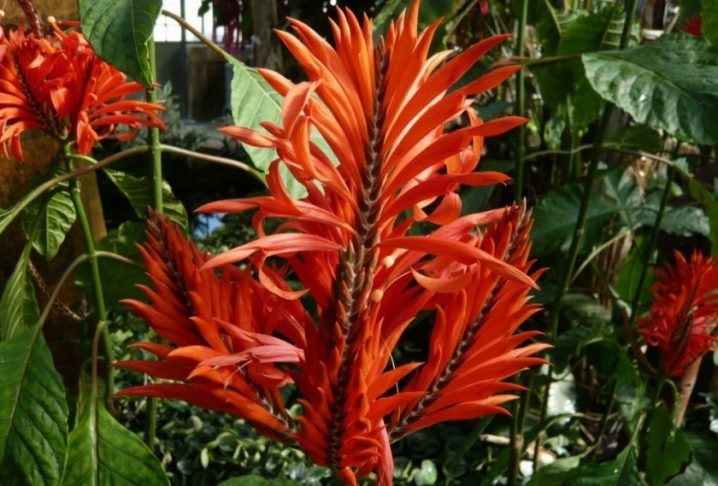
- "Denmark". The drawing on the leaves is green and white, the plate is dark green. Inflorescences are yellow, outwardly similar to cones.

Orange
Afelandra orange or golden is a short shrub with dense, fleshy reddish shoots. The trunk of a culture becomes lignified over time. The leaf plates are large, oval in shape with a sharp tip, with a silvery-white pattern. The flower is embossed, colored orange. The flowering period lasts a week. The bract of Afelandra is orange-yellow, as in all types of culture. When the plant is in favorable conditions for a long time, Afelandra blooms from early summer to November.

The most common cultivar for growing in apartments is Afelandra Retzlä. The leaves are large, silvery-white, the inflorescence is large, collected from orange-red buds. The culture is easily propagated by seeds, bears fruit.
Conditions of detention
Conditions of detention depend on the season.
- During the warm period (spring, summer) the culture is watered up to 2 times a week, constantly sprayed, nutrients must be added every week. Lighting should be bright, diffused. Due to frequent and abundant watering, it is worth paying more attention to the soil in order to avoid waterlogging. Excess water must be drained off. It is advisable to maintain the temperature in the spring within 20 degrees Celsius, in the summer to increase to +25 degrees.

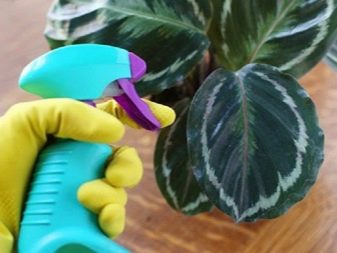
- During the cold period (autumn, winter) watering is reduced with the obligatory drying of the upper soil layer. An additional light source is installed - phyto-lamps. In autumn, feeding is done once every 2 weeks, in winter it is completely absent. The air temperature in the autumn months is +18 degrees, in winter - at least 16 degrees. A short-term sharp drop in temperatures will not harm the culture.
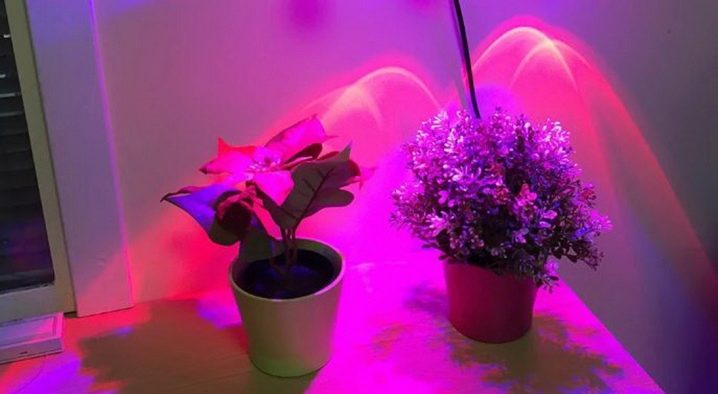
Important! Draft protection is a must in any season.
How to care?
Caring for afelandra at home requires careful observance of the temperature regime, wintering and watering regulation.


Watering
Afelandra is a representative of the tropics, so she needs warmth and abundant moisture. Watering is carried out as the upper layer of the substrate dries up; in the heat, watering can go up to 2 times a day. It is necessary to spray the plant every day or wipe the leaves with damp material. Water is taken warm, soft, filtered, room temperature.

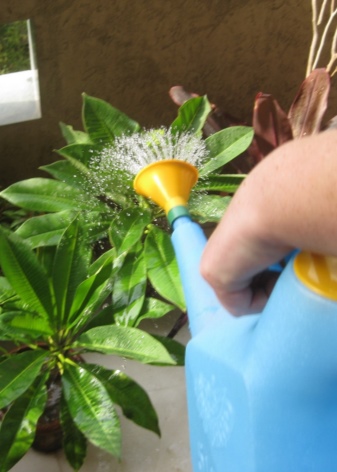
Top dressing
The culture grows rather quickly, due to which the amount of nutrients in the substrate, essential microelements, is sharply reduced. Fertilizers are applied to wet soil every month. Depending on the season, the procedure can be performed every week. During the period of active growth of green mass and roots, Afelandru is fed with nitrogen-containing fertilizers, preparations for decorative leafy crops are suitable. During the formation of flower ovaries and flowering - nutrient liquids for decorative flowering plants. In the cold season, Afelandra needs phosphorus, potassium, nitrogen.


Pruning
The active growth of the culture leads to the elongation of the shoots, which reduces the decorative effect of the shrub, its compactness. The loss of attractiveness of the bush is controlled by formative pruning. For a compact crown and giving splendor, the apical shoots are pinched to the plant, repeating the procedure until the desired result is achieved. Adult crops are pruned in the spring using sterile instruments. Pruning is done over developed leaves, removing up to a third of the length of the shoot. This method allows the buds formed in the leaf axils to wake up, thereby improving the splendor of the bush and rejuvenating the old plant. After flowering, the removal of all dried or injured parts of the plant is brought. Cropped crops need high humidity. It should be sprayed with afelandra morning and evening.
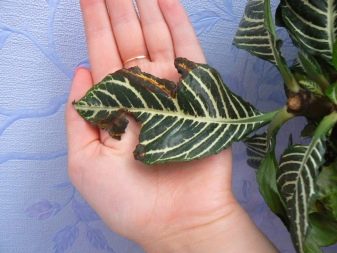

Bloom
Inflorescences appear in summer and last for up to several weeks. After the end of the flowering period, the bracts and buds must be removed so that the fruit does not form. The end of the fruiting period often ends with the death of the plant. In order for Afelandra to form flower ovaries, she needs a rest period. In the middle of autumn (when the flowering is over), the container with the culture is transferred to a cool place. Rest at a temperature of +16 degrees and moderate watering promotes long flowering for the next year and does not deplete the strength of the culture.


Transfer
After purchasing Afelandra, the plant must be transplanted into a new pot. It is worth giving preference to tall, heavy ceramic containers, without glaze.Each subsequent plant transplant is made in containers 5 cm larger than the previous container, both in width and height. Any pot should be equipped with drainage holes. The soil for afelandra needs breathable, moisture-retaining, lightweight. Purchased and composite mixtures of components such as:
- peat, sand or vermiculite in a ratio of 6: 2;
- sod land, peat, washed sand in a ratio of 2: 1: 1.


Important! Before planting the plant, the ground must be disinfected: spill with a solution of potassium permanganate, boiling water or ignite in an oven at a temperature of + 100– + 130 degrees for half an hour.
The recommended sequence of actions is as follows:
- water the soil in a temporary container abundantly for easy extraction of the plant;
- inspect the root system of the culture while preserving an earthen coma - if the roots are damaged or infected, you need to remove all injured and diseased areas to healthy tissues, sprinkle the wounds with coal and partially remove the soil from the root system;
- the bottom of the new pot is filled with expanded clay or other large drainage material (3 cm layer);
- the drainage is sprinkled with earth 2 cm thick, a plant is installed on the finished bottom, without bending the roots, evenly distributing the root system along the height, focusing so that the neck of the culture is 2-3 cm below the upper edge of the pot;
- begin to fill the free space with earth, gradually tamping;
- cover the top layer of soil with mulch or sphagnum moss, decorative stones;
- water the plant until moisture comes out of the drainage hole, add earth if necessary.
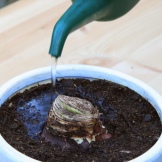



Important! With the roots removed, the plant should be watered with water with the addition of growth stimulants on the first and 14 days after planting.
Reproduction
In the conditions of an apartment, the culture is propagated by the seed method and vegetatively - by cuttings by shoots, leaves.

Seeds
The seeds of the culture are sown in late winter or spring. Sowing is done on soil consisting of leafy earth, sand, or peat tablets. To accelerate seed germination and their development, containers with material are placed in a greenhouse with bottom heating. The temperature is constantly maintained at around 22 degrees Celsius. When the seedlings grow several pairs of true leaves, the crops are picked into individual containers. Soil for young animals is taken from sod land, sand, leafy ground. Finding seedlings in favorable conditions accelerates the onset of the flowering period. Flower ovaries can be formed already in the first year after sowing the seeds.

Cuttings
Ripe shoots are suitable for cuttings. Several developed leaves are left on the material, the length of the stem is shortened to 10 cm. Cuttings are collected in spring or in the first months of winter. To speed up and increase the chances of the fragment for rooting, the cuttings are treated with a stimulating drug "Kornevin", "Heteroauxin", succinic acid or another substance responsible for root formation. Ready cuttings are planted in a substrate, in individual containers. The bottom heating of the containers is installed, the pots are covered with a bag or installed in the greenhouse.
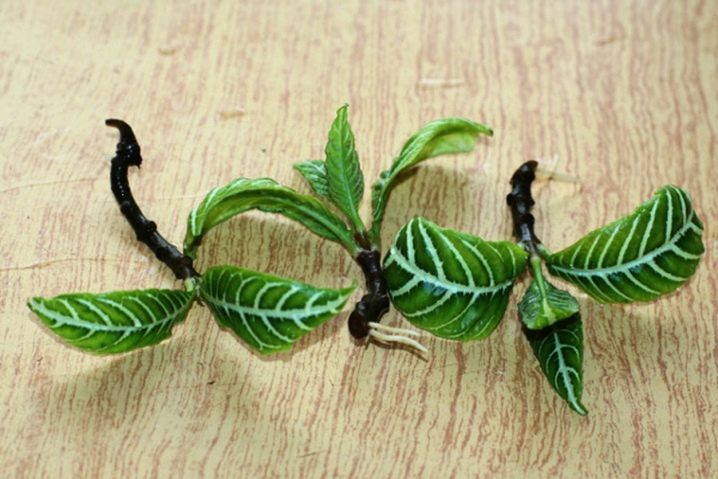
Every day it is necessary to ventilate the plants and spray the cuttings, soil, and water the soil evenly. At a temperature of + 20– + 25 degrees, rooting will occur in the second month after planting or earlier (stem cuttings). Apical cuttings take root faster, on average, roots are formed after 3 weeks. Young aphelanders dive into new containers with drainage and nutrient soil. They are grown in conditions suitable for adult crops.

In autumn and winter, the plant can be propagated by a leaf plate with a preserved axillary bud. The leaves are taken young, without deformations and injuries from the shoot, on which no flower ovaries have formed. A suitable leaf is planted in a mixture of peat and sand.The container is covered with a bag. The whole acceleration process is similar to regular cuttings.
Diseases and pests
It is worth considering in more detail The most common problems when growing Afelandra are:
- sheds leaves - low temperature, draft or lack of moisture in the substrate can become the cause of leaf fall; Review the watering schedule for the plant or the amount of liquid applied;
- poor soil - the reason is irregular feeding, low concentration;
- low humidity - you may need to install an additional source of moisture (container with water, air humidifier);
- the edges of the leaves dry, the tips - the appearance of brown spots is caused by mold damage, treatment with fungicidal preparations is required; with a lack of moisture, the tips of the leaves dry out, break;
- the leaf plate turns black, dries - dark brown, almost black spots are caused by the bay of culture, from a long stay in direct sun, lack of fresh air;
- small leaves - with a lack of nutrients, shredding of young leaves, deformation of the plates is observed; the second reason is the cramped pot.
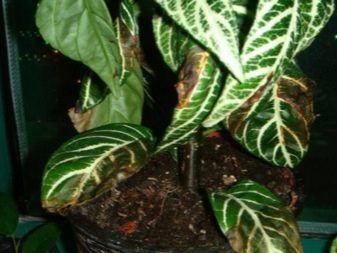

Many are interested in the question of what to do if the plant is flooded. It is worth following the following steps:
- with the development of rot, the removal of infected tissues occurs, healthy roots are washed, the root system is treated with a wound-healing preparation;
- the culture is transplanted into fresh dry soil;
- watering is done the next day.

Important! In difficult situations, there is only one way out - by cutting afelandra. The healthy part of the culture stem is processed from damaged tissues and rooted in the substrate with the obligatory treatment with "Fungicide".
Afelandra is affected by insects such as scale insects, aphids, mealybugs. For pest control, insecticidal preparations of a wide and narrow profile are used. Most often, the culture is devoured by aphids and scale insects. Sucking insects feed on the cell sap of the plant, affecting the shoots of the flower, leaves and buds fall off. With an underdeveloped colony of insects, it will be enough to treat the plant with soapy water and replace the top layer of soil. Shields require manual removal using wet cotton swabs moistened with alcohol or soapy water, and then replacing the top layer of the earth.

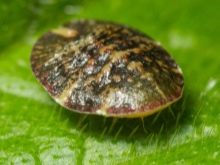

Important! For the period of processing, the culture should be placed in a place separate from other plants for a week.
In case of mass infection by a large colony of pests, insecticidal drugs are used, preferably with a complete replacement of the soil. The processing of the infected culture takes place in the morning or evening, in places without wind and drafts. The duration of treatment depends on the quality of the treatment and the number of insects. The entire period of Afelandra should be quarantined, since insects easily infect neighboring crops, are carried through clothing and through the air.

For information on how to properly care for Afelandra, see the next video.























The comment was sent successfully.